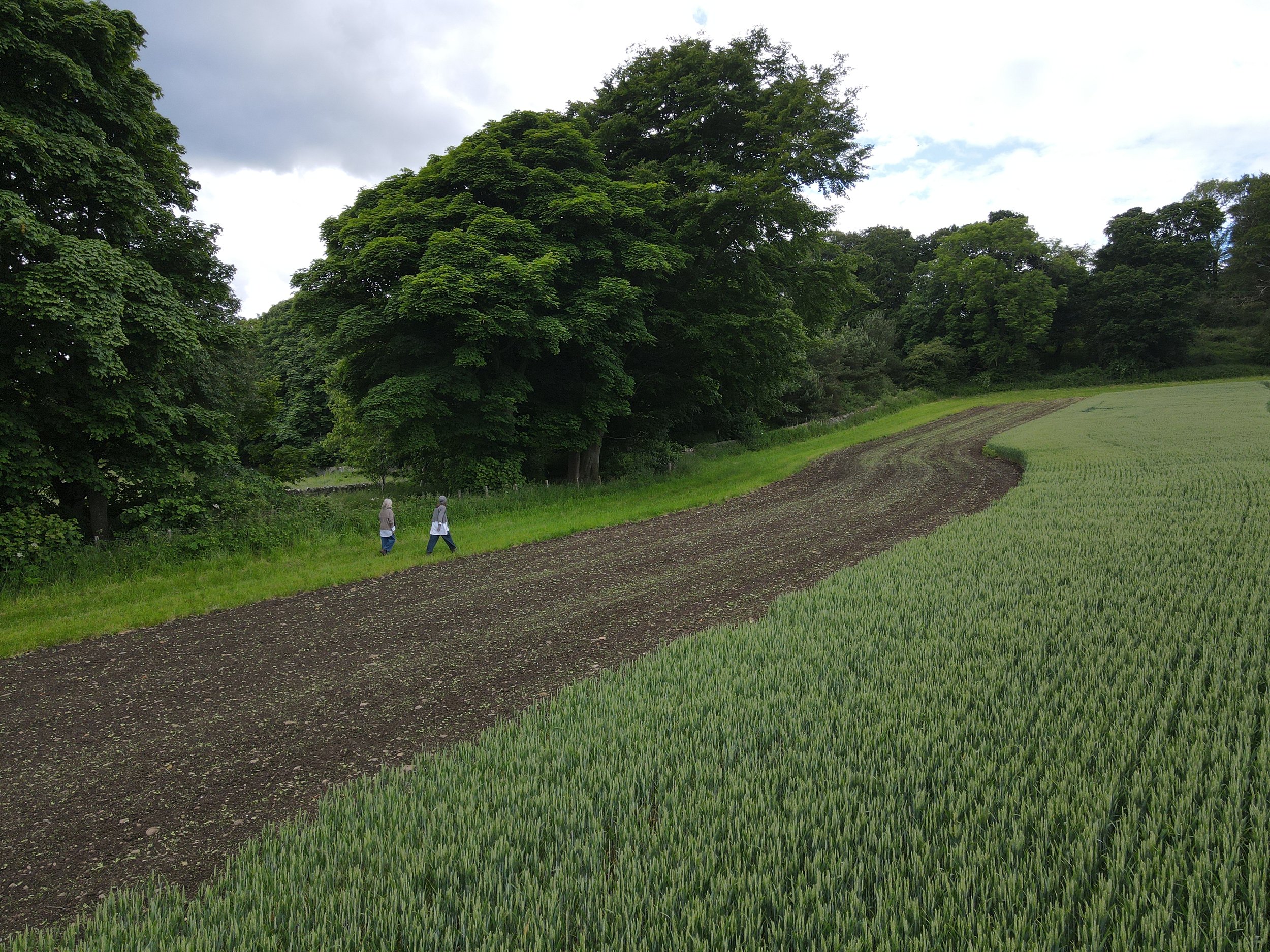
Why “Future Vintage”?
Every Future Vintage collection begins long before the wool is spun, out in the fields, among the grass and soil, with the sheep themselves.
Each year, we carefully plan our breeding and lambing season, selecting specific rams with fleece colours that will help shape the palette of the coming collection. Our pedigree Shetland ewes are annually grouped by lineage and colour—white, moorit (a rich, earthy brown), black, and katmoget (a striking grey blend). When the ram is introduced to his flock of around 50 ewes each year, his colouring plays a pivotal role in determining the tones of the next generation of fleeces.
These decisions set the tone for the entire following year’s knitwear. It’s a beautiful mix of instinct, tradition, and trust in nature. We call each of these annual fleece blends a Vintage. Like a good harvest or a fine wine, it’s shaped by the land, the choices we make, and the natural course of the seasons. Each ‘crop’ of wool at shearing time continues the sustainable cycle.
By working this way, we honour both the individuality of each year’s wool and the story behind it, creating garments that are as unique as the sheep they came from, and designed to be treasured, but not treated as precious, for years to come. With wear, care, and repair, each one becomes what its name promises: a future vintage in its own right.


The Making of Our Collections
Each year, once the fleeces are shorn — a day that’s all hands on deck — they’re hand-sorted on the farm by Lindsay and our team before being sent to the Natural Fibre Company in England. It’s one of the few UK mills still able to scour, card, and spin small-batch fleece at scale. Using traditional equipment and low-impact methods, they transform our raw Shetland wool into soft, durable yarns in the four natural colours of the flock: white, moorit, black, and katmoget.
Back at Bonnytoun, the making continues in our 200-year-old stone atelier. Each design is developed by Lindsay, in collaboration with Maija Nygren and our small team of design graduates, skilled knitters and hand-sewers. The process includes plenty of sketching, pattern development, and hands-on testing.
Every garment is then knitted and linked on vintage Dubied machines by our makers, including recent graduate knitters who join us through regular training opportunities and work alongside Lindsay in the atelier.
Once knitted, each piece is washed, pressed, blocked, and finished by hand. Offcuts and surplus wool are never wasted: small scraps are composted or used for insulation around the farm, and larger remnants are repurposed through ongoing collaborations, including the WORTH Project.
